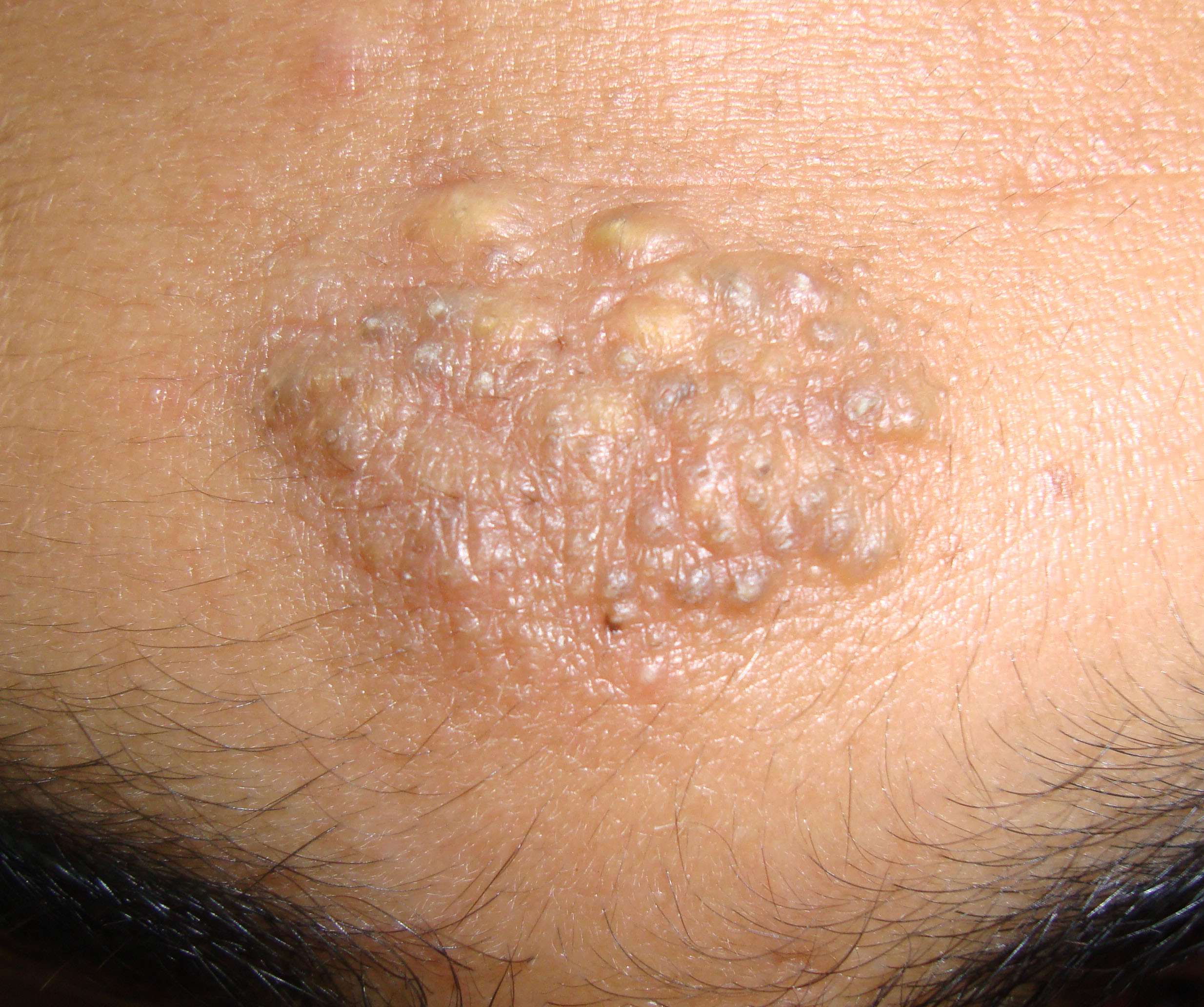[1]
Tchernev G, Ananiev J, Semkova K, Dourmishev LA, Schönlebe J, Wollina U. Nevus comedonicus: an updated review. Dermatology and therapy. 2013 Jun:3(1):33-40. doi: 10.1007/s13555-013-0027-9. Epub 2013 May 25
[PubMed PMID: 23888253]
[2]
Liu F, Yang Y, Zheng Y, Liang YH, Zeng K. Mutation and expression of ABCA12 in keratosis pilaris and nevus comedonicus. Molecular medicine reports. 2018 Sep:18(3):3153-3158. doi: 10.3892/mmr.2018.9342. Epub 2018 Jul 31
[PubMed PMID: 30066947]
[3]
Levinsohn JL, Sugarman JL, Yale Center for Mendelian Genomics, McNiff JM, Antaya RJ, Choate KA. Somatic Mutations in NEK9 Cause Nevus Comedonicus. American journal of human genetics. 2016 May 5:98(5):1030-1037. doi: 10.1016/j.ajhg.2016.03.019. Epub
[PubMed PMID: 27153399]
[4]
Ferrari B, Taliercio V, Restrepo P, Luna P, Abad ME, Larralde M. Nevus comedonicus: a case series. Pediatric dermatology. 2015 Mar-Apr:32(2):216-9. doi: 10.1111/pde.12466. Epub 2014 Dec 29
[PubMed PMID: 25557057]
Level 2 (mid-level) evidence
[5]
Nabai H, Mehregan AH. Nevus comedonicus. A review of the literature and report of twelve cases. Acta dermato-venereologica. 1973:53(1):71-4
[PubMed PMID: 4120812]
Level 3 (low-level) evidence
[6]
Vidaurri-de la Cruz H, Tamayo-Sánchez L, Durán-McKinster C, de la Luz Orozco-Covarrubias M, Ruiz-Maldonado R. Epidermal nevus syndromes: clinical findings in 35 patients. Pediatric dermatology. 2004 Jul-Aug:21(4):432-9
[PubMed PMID: 15283784]
[7]
Zanniello R, Pilloni L, Conti B, Faa G, Rongioletti F. Late-Onset Nevus Comedonicus With Follicular Epidermolytic Hyperkeratosis-Case Report and Review of the Literature. The American Journal of dermatopathology. 2019 Jun:41(6):453-455. doi: 10.1097/DAD.0000000000001317. Epub
[PubMed PMID: 30461425]
Level 3 (low-level) evidence
[9]
Ito T, Mitamura Y, Tsuji Y, Harada K, Urabe K. Bilateral nevus comedonicus syndrome. Yonago acta medica. 2013 Jun:56(2):59-61
[PubMed PMID: 24031154]
[10]
Abdel-Aal H, Abdel-Aziz AM. Nevus comedonicus. Report of three cases localized on glans penis. Acta dermato-venereologica. 1975:55(1):78-80
[PubMed PMID: 46679]
Level 3 (low-level) evidence
[11]
Cho SB, Oh SH, Lee JH, Bang D, Bang D. Ultrastructural features of nevus comedonicus. International journal of dermatology. 2012 May:51(5):626-8. doi: 10.1111/j.1365-4632.2010.04588.x. Epub 2011 Oct 5
[PubMed PMID: 21973328]
[12]
Kamińska-Winciorek G, Spiewak R. Dermoscopy on nevus comedonicus: a case report and review of the literature. Postepy dermatologii i alergologii. 2013 Aug:30(4):252-4. doi: 10.5114/pdia.2013.37036. Epub 2013 Aug 27
[PubMed PMID: 24278083]
Level 3 (low-level) evidence
[13]
Vora RV, Kota RS, Sheth NK. Dermoscopy of Nevus Comedonicus. Indian dermatology online journal. 2017 Sep-Oct:8(5):388-389. doi: 10.4103/idoj.IDOJ_430_16. Epub
[PubMed PMID: 28979887]
[14]
Capusan TM, Chicharro P, Rodriguez-Jimenez P, Martinez-Mera C, Urquía A, Aragüés M, de Argila D. Successful treatment to a tretinoin/clindamycin gel in a late onset of nevus comedonicus. Dermatologic therapy. 2017 Jul:30(4):. doi: 10.1111/dth.12486. Epub 2017 Mar 14
[PubMed PMID: 28295844]
[15]
Zhu C, Sun A. Ultrapulse carbon dioxide laser treatment for bilateral facial nevus comedonicus: A case report. Dermatologic therapy. 2017 May:30(3):. doi: 10.1111/dth.12473. Epub 2017 Feb 15
[PubMed PMID: 28198069]
Level 3 (low-level) evidence
[16]
Qian G, Liu T, Zhou C, Zhang Y. Naevus comedonicus syndrome complicated by hidradenitis suppurativa-like lesions responding to acitretin treatment. Acta dermato-venereologica. 2015 Nov:95(8):992-3. doi: 10.2340/00015555-2089. Epub
[PubMed PMID: 25758459]
Level 2 (mid-level) evidence
[17]
Milton GP, DiGiovanna JJ, Peck GL. Treatment of nevus comedonicus with ammonium lactate lotion. Journal of the American Academy of Dermatology. 1989 Feb:20(2 Pt 2):324-8
[PubMed PMID: 2915076]
[18]
Polat M, Altunay Tuman B, Sahin A, Dogan U, Boran C. Bilateral nevus comedonicus of the eyelids associated with bladder cancer and successful treatment with topical tretinoin. Dermatologic therapy. 2016 Nov:29(6):479-481. doi: 10.1111/dth.12385. Epub 2016 Aug 9
[PubMed PMID: 27502087]
[19]
Kaliyadan F, Nampoothiri S, Sunitha V, Kuruvilla VE. Nevus comedonicus syndrome--nevus comedonicus associated with ipsilateral polysyndactyly and bilateral oligodontia. Pediatric dermatology. 2010 Jul-Aug:27(4):377-9. doi: 10.1111/j.1525-1470.2010.01170.x. Epub
[PubMed PMID: 20653857]
[20]
Filosa G, Bugatti L, Ciattaglia G, Salaffi F, Carotti M. Naevus comedonicus as dermatologic hallmark of occult spinal dysraphism. Acta dermato-venereologica. 1997 May:77(3):243
[PubMed PMID: 9188888]
[21]
Sinha A, Natarajan S. Linear morhpea, nevus comedonicus, and lichen striatus in a 5-year-old girl. Pediatric dermatology. 2011 Jan-Feb:28(1):72-4. doi: 10.1111/j.1525-1470.2010.01250.x. Epub 2010 Sep 1
[PubMed PMID: 20825567]
[22]
Lee HJ, Chun EY, Kim YC, Lee MG. Nevus comedonicus with hidradenoma papilliferum and syringocystadenoma papilliferum in the female genital area. International journal of dermatology. 2002 Dec:41(12):933-6
[PubMed PMID: 12530358]
[23]
Ravaioli GM, Neri I, Zannetti G, Patrizi A. Congenital nevus comedonicus complicated by a hidradenitis suppurativa-like lesion: Report of a childhood case. Pediatric dermatology. 2018 Sep:35(5):e298-e299. doi: 10.1111/pde.13574. Epub 2018 Jun 27
[PubMed PMID: 29952017]
Level 3 (low-level) evidence
[24]
Woods KA, Larcher VF, Harper JI. Extensive naevus comedonicus in a child with Alagille syndrome. Clinical and experimental dermatology. 1994 Mar:19(2):163-4
[PubMed PMID: 8050150]
[25]
Martinez M, Levrero P, Bazzano C, Larre Borges A, De Anda G. Nevus comedonicus syndrome in a woman with Paget bone disease and breast cancer: a mere coincidence? European journal of dermatology : EJD. 2006 Nov-Dec:16(6):697-8
[PubMed PMID: 17229620]

